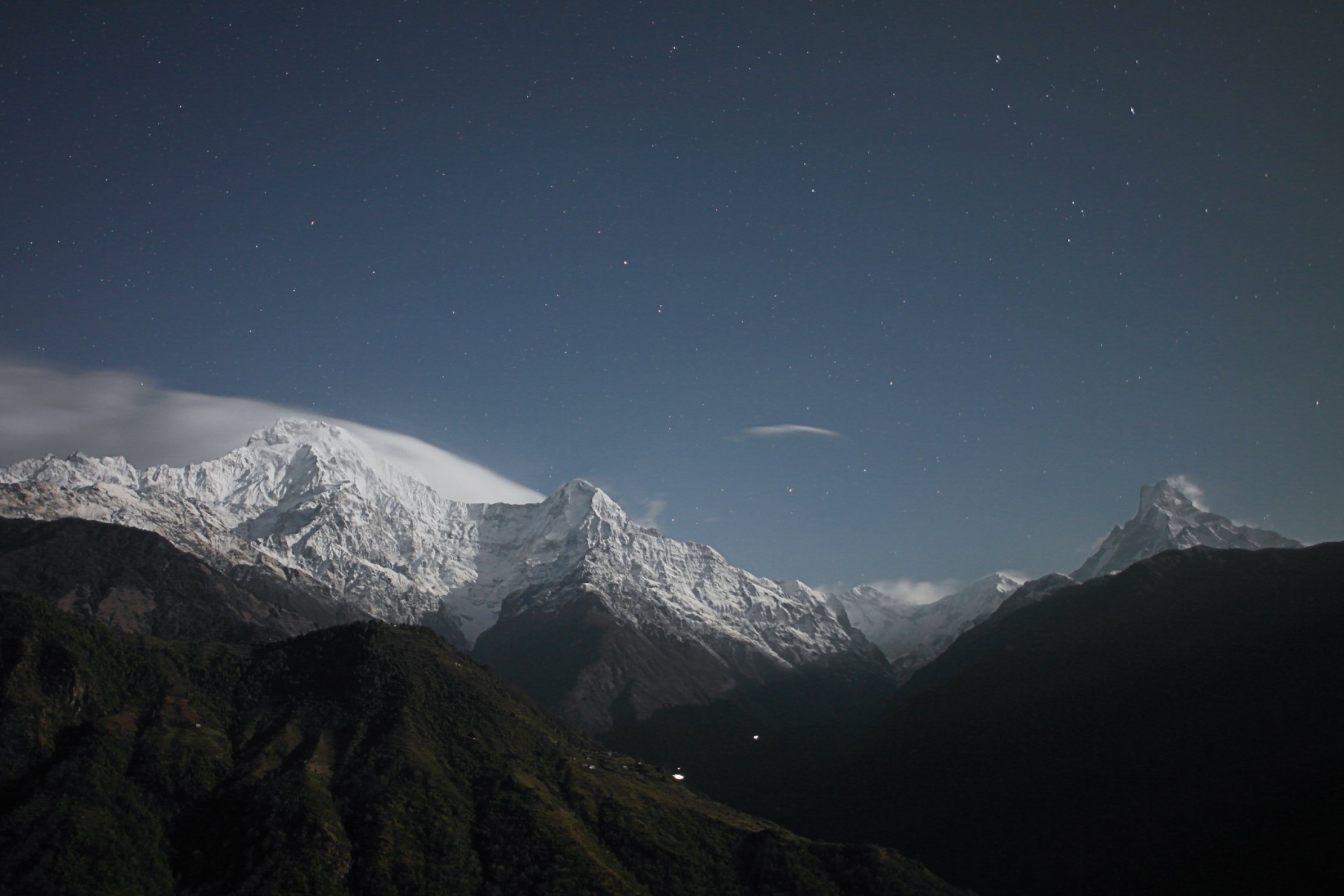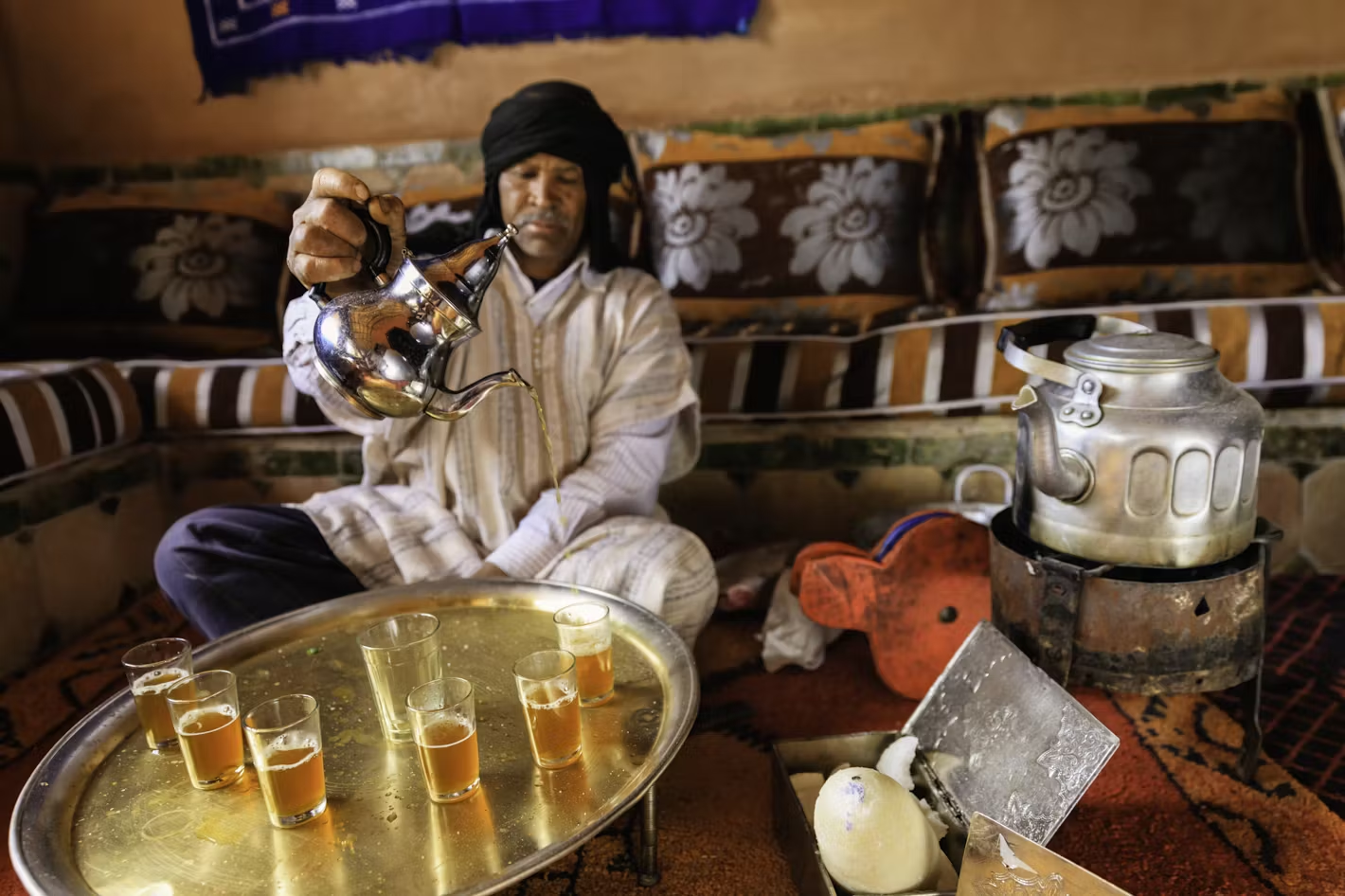Discover the Atlas Mountains
Breathtaking peaks, traditional Berber villages, and alpine landscapes
The Atlas Mountains form a magnificent mountain range stretching 2,500 kilometers across Morocco, Algeria, and Tunisia. The Moroccan portion, just a short drive from Marrakech, offers visitors a complete contrast to the bustling city and desert landscapes. Here, you'll discover snow-capped peaks, lush valleys, traditional Berber villages, and refreshing mountain air. A journey into the Atlas Mountains provides insight into Morocco's indigenous Berber culture and some of North Africa's most dramatic natural landscapes.

Breathtaking view of the High Atlas Mountains
What to See in the Atlas Mountains
Toubkal National Park
Home to Jebel Toubkal, North Africa's highest peak at 4,167 meters, this national park offers spectacular hiking opportunities. The diverse landscape includes rugged mountains, deep valleys, and traditional villages. Even if you don't plan to summit Toubkal, the park's lower elevations provide accessible day hikes with stunning views. The main gateway to the park is the village of Imlil, where many hiking adventures begin.
Berber Villages
The Atlas Mountains are home to Morocco's indigenous Berber people who have inhabited these regions for thousands of years. Villages like Imlil, Aremd, and Armed offer glimpses into traditional mountain life. These settlements feature distinctive earthen architecture that blends perfectly with the surrounding landscape. Visiting these communities provides insight into Berber customs, crafts, and their sustainable way of life adapted to the mountain environment.

Traditional Berber village nestled in the Atlas Mountains
Ourika Valley
One of the most accessible and beautiful valleys of the Atlas, the Ourika Valley is known for its dramatic landscapes, waterfalls, and riverside cafes. Located just 30 kilometers from Marrakech, this lush green valley makes for a perfect day trip. During spring, wildflowers carpet the valley floor, creating a spectacular contrast with the snow-topped mountains above. The area is particularly popular with locals on weekends who come to enjoy the cool mountain air.
Ouzoud Waterfalls
Located in the Middle Atlas region, the Ouzoud Falls are among the most impressive waterfalls in Morocco. Plunging 110 meters through a complex multi-level system of cascades, these falls create a permanent rainbow effect in the mist. The surrounding area is lush with olive groves (the name "Ouzoud" means "olive" in Berber), and the basin at the bottom of the falls offers a refreshing swimming spot during summer months.
Things to Do in the Atlas Mountains
Hiking and Trekking
The Atlas Mountains offer some of North Africa's best hiking experiences, with routes ranging from easy day hikes to challenging multi-day treks. The most famous trek is the ascent of Mount Toubkal, typically done over two days with an overnight stay in a mountain refuge. For less challenging options, there are numerous well-marked trails around Imlil, Ourika Valley, and Ouirgane that offer spectacular views without the technical difficulty.
Visit a Traditional Berber Home
Many families in the Atlas Mountains open their homes to visitors, offering a unique opportunity to experience traditional Berber hospitality. These visits often include mint tea ceremonies, homemade bread, and authentic tagine meals. It's a chance to learn about daily mountain life directly from the people who have perfected living in this challenging environment over generations.

Traditional Berber mint tea ceremony
Mountain Biking
The varied terrain of the Atlas Mountains provides excellent opportunities for mountain biking adventures. Numerous routes cater to different skill levels, from gentle rides along valley floors to technical descents down rocky paths. Several outfitters in Marrakech offer guided mountain biking excursions with all necessary equipment, allowing you to explore remote areas and villages that might otherwise be difficult to reach.
Mule Trekking
For those who prefer a less strenuous way to explore the mountains, mule trekking offers a traditional alternative. Following ancient paths between villages, these journeys provide access to spectacular viewpoints while experiencing the traditional mode of transport in the region. Many hiking guides offer mule support for carrying equipment, but you can also ride the mules yourself for a more authentic mountain experience.
How to Get to the Atlas Mountains from Marrakech
The Atlas Mountains begin just 30 kilometers south of Marrakech, making them one of the most accessible natural attractions from the city. The drive to various Atlas destinations ranges from 1-3 hours depending on which area you wish to visit.
By Rental Car
Having your own vehicle provides the most flexibility for exploring the Atlas Mountains. The roads to popular destinations like Ourika Valley, Imlil, and Ouirgane are well-maintained and suitable for standard cars. However, for more remote areas, a vehicle with higher clearance is recommended. The main routes from Marrakech are well-signposted, making navigation relatively straightforward.
By Public Transport
Shared taxis and local buses connect Marrakech to major towns in the Atlas foothills like Asni and Ourika. From these hubs, you'll need to take additional transport to reach smaller villages. This option requires more time and planning but offers an authentic local experience.
By Guided Tour
Numerous tour operators in Marrakech offer day trips and multi-day excursions to the Atlas Mountains. These range from basic transport-only services to comprehensive packages including guides, meals, and activities. For first-time visitors or those short on time, this can be the most convenient option.
Explore the Atlas Mountains at Your Own Pace
With your own rental car, you can discover hidden valleys, stop at viewpoints whenever you wish, and explore multiple regions of the Atlas in a single trip.
View Our Car CollectionPopular Atlas Mountains Routes
Ourika Valley Loop (Day Trip)
This easy route takes you up the Ourika Valley, with stops at riverside cafes, Berber villages, and the Setti Fatma waterfalls. The loop can be completed in 6-8 hours from Marrakech, making it perfect for a day trip. The roads are suitable for any vehicle and offer spectacular mountain views throughout the journey.
Imlil and Toubkal Foothills (1-2 Days)
Drive to Imlil (1.5 hours from Marrakech) and spend a day hiking in the foothills of Mount Toubkal. There are numerous trails suitable for different fitness levels, from 2-hour walks to full-day hikes. Stay overnight in one of Imlil's mountain lodges or guesthouses for a complete Atlas experience.
High Atlas Crossing to Ouarzazate (2-3 Days)
This spectacular route crosses the High Atlas via the Tizi n'Tichka pass (2,260 meters), one of the most dramatic roads in Morocco. The journey takes you from Marrakech to Ouarzazate, with potential stops at Telouet Kasbah, Ait Ben Haddou, and various panoramic viewpoints. This route connects the northern plains with the pre-Saharan regions and offers constantly changing landscapes.
When to Visit the Atlas Mountains
The Atlas Mountains can be visited year-round, but each season offers a different experience:
- Spring (March-May): Ideal for hiking and photography with lush green valleys, wildflowers, and flowing rivers. Temperatures are comfortable at lower elevations.
- Summer (June-August): Perfect for high-altitude trekking with clear skies, though temperatures in the valleys can be hot. The mountains offer a cool escape from Marrakech's summer heat.
- Fall (September-November): Excellent for hiking with stable weather, fewer tourists, and beautiful autumn colors in certain areas.
- Winter (December-February): The high peaks are snow-covered, creating spectacular scenery. Lower valleys remain accessible, while the Oukaïmeden ski resort opens for skiing and snowboarding.
Tips for Visiting the Atlas Mountains
- Start early: Mountain weather is most stable in the morning, with clouds and potential storms often developing in the afternoon.
- Pack layers: Temperature variations between valleys and peaks can be significant, so bring clothing you can add or remove as needed.
- Carry cash: Most villages have limited or no banking facilities, so bring sufficient Moroccan dirhams for purchases, meals, and tips.
- Download offline maps: Mobile coverage is limited in mountain areas, so download maps before your trip for offline navigation.
- Consider hiring a local guide: For hiking, a local guide can enhance your experience with cultural insights and ensure you find the best trails.
Quick Facts
- Distance from Marrakech: 30-150 km (depending on area)
- Driving Time: 1-3 hours
- Best Time to Visit: March-May, September-November
- Known For: Hiking, Berber culture, mountain scenery
Car Rental Options
For the journey to the Atlas Mountains, we recommend:
- Compact Perfect for main roads and easy handling on mountain curves
- SUV Ideal for accessing more remote villages and rougher roads

